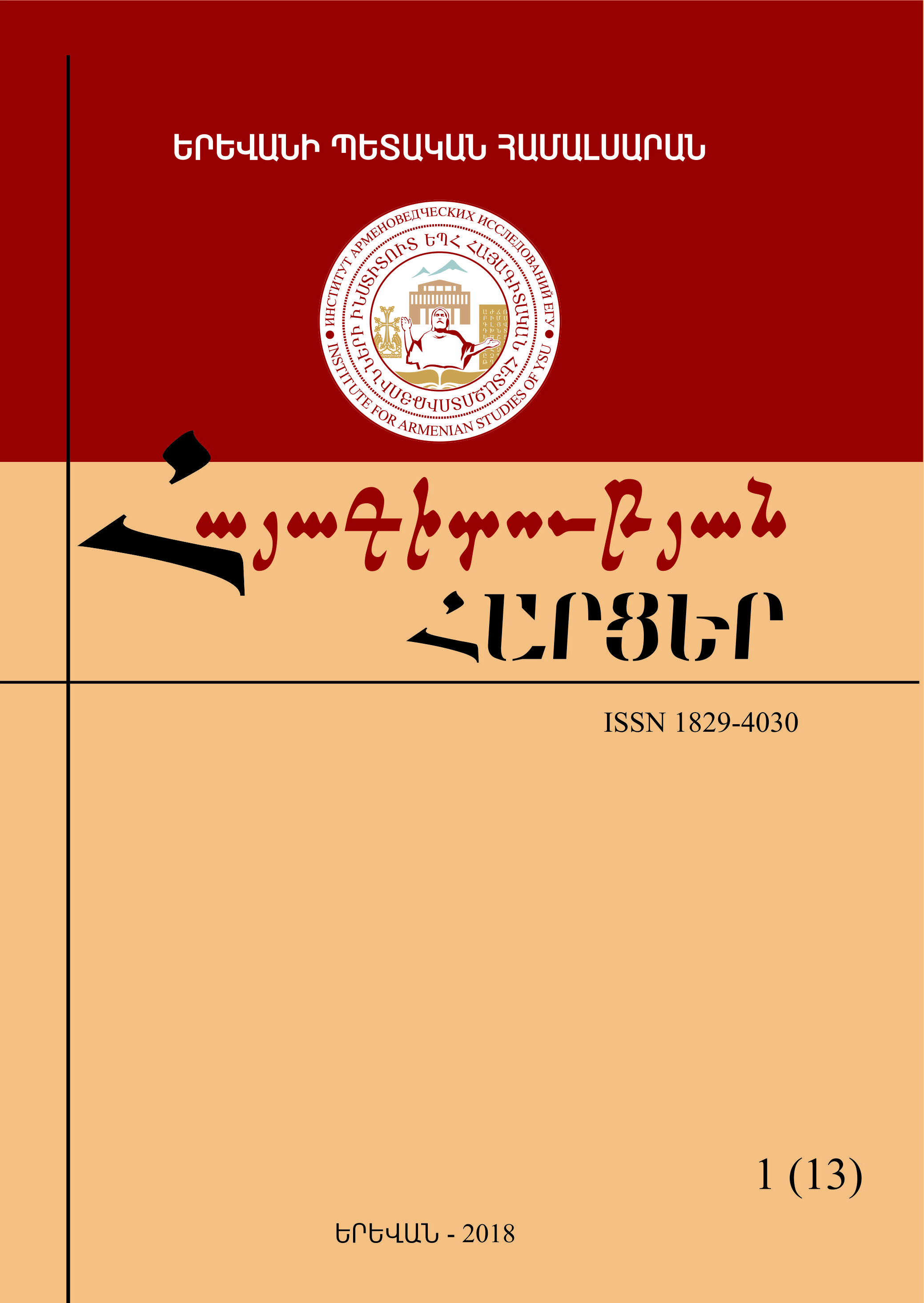«Սասունցի Դավիթ» էպոսի տեքստի միահյուսությունը ժառանգականության հիմնախնդրի տիրույթում
Abstract
The intertwined completenes of accepted and evaluated texts that have stood the test of time can also be indicated by realities in the systems of linguistic thinking and values. In particular, the intertwined completeness in the folk text “David of Sasoun” can be seen in the gradual raising of the problem of the world outlook: in the epic, the nation's idea and problems of thinking in values are developed and highlighted in the order of things, by transitioning from branch to branch. This is clearly manifested especially in the case of setting and solving the problem of heir and herеdity. If the heredity problem is resolved at the level of characters in the first three branches, then in the fourth branch it is resolved at a symbolic level, since in the last branch Little Mher transformes from a character into a symbol, in order that the end of the epic is not perceived as the end and fall of Sasoun.

